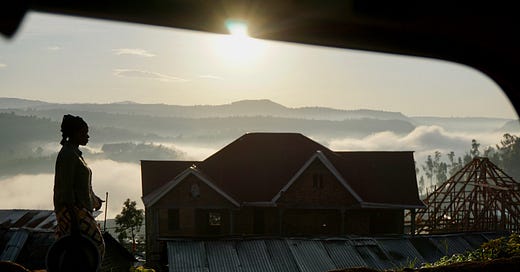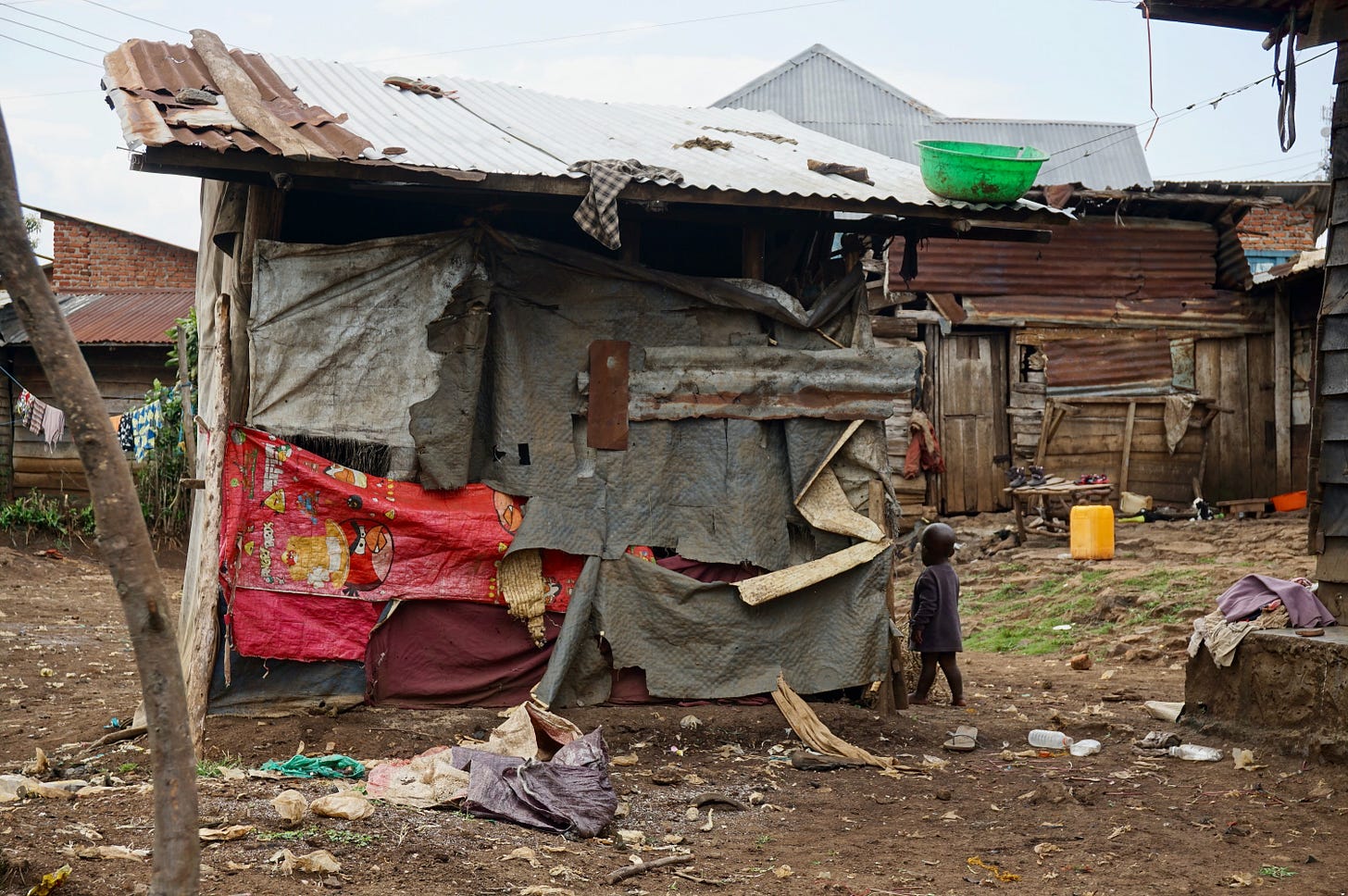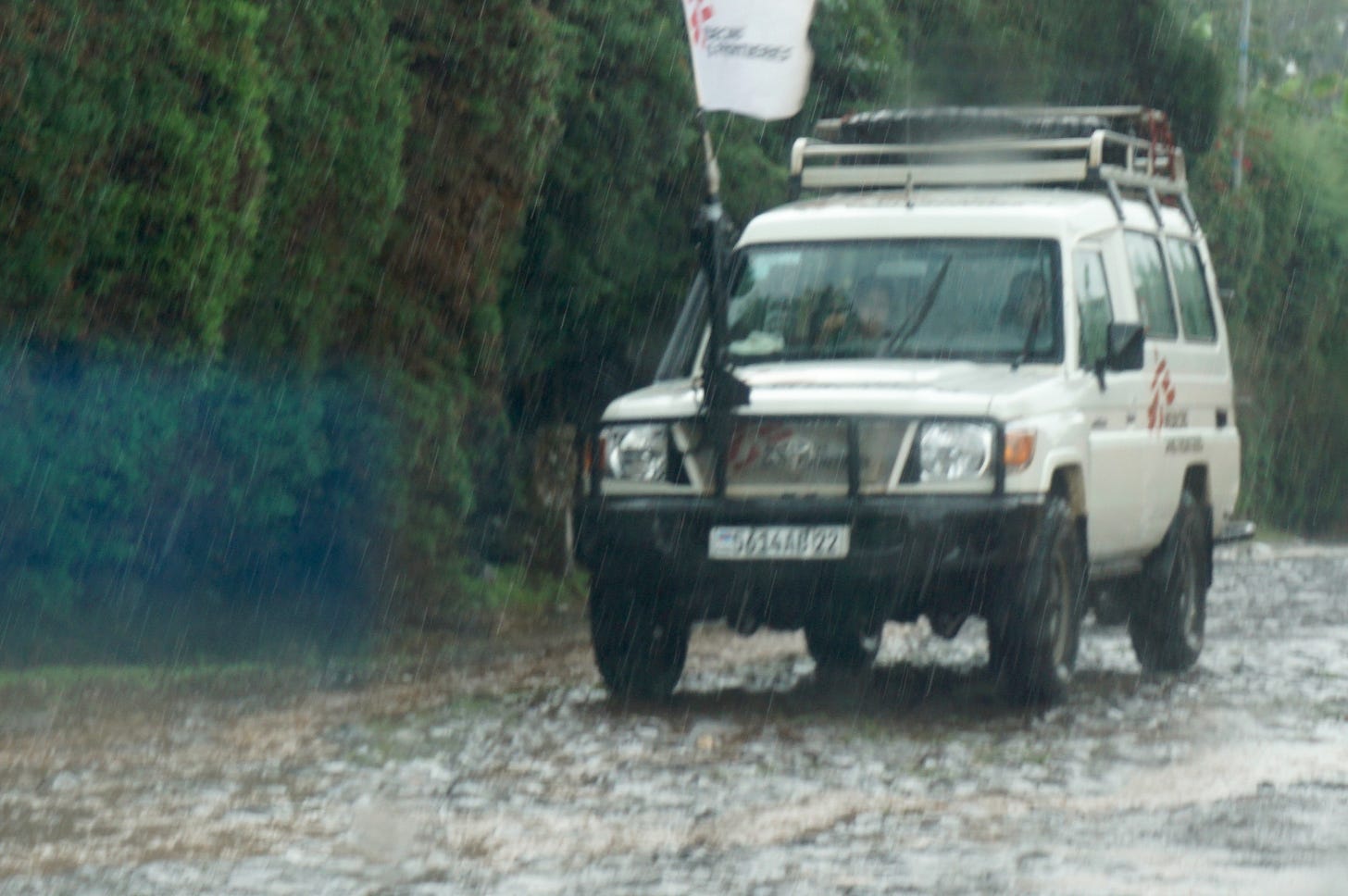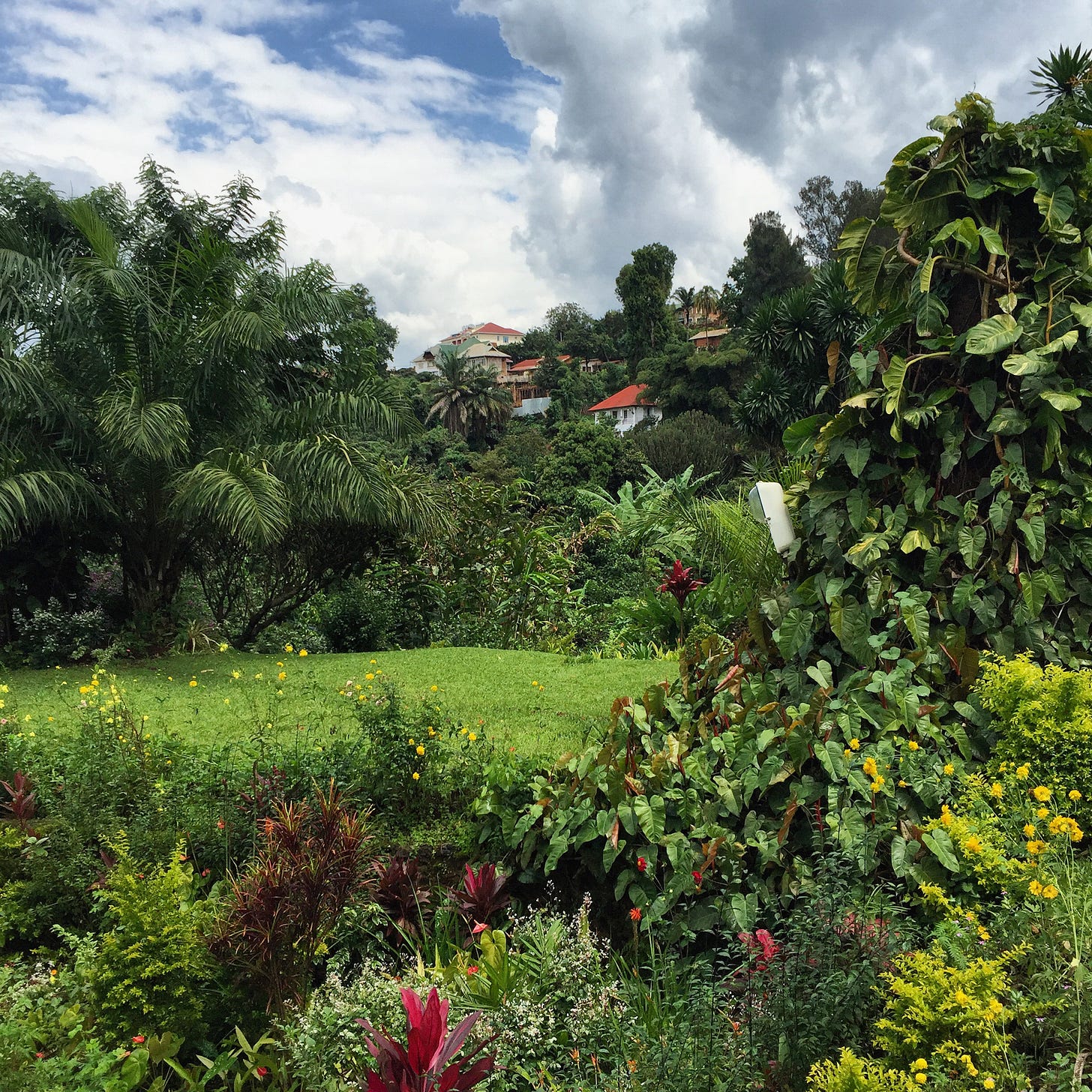How a journalist chases a monster, Part 1
The first in a series that pulls back the curtain on seven years of reporting.
It was in a sickly green, fluorescent-lit meeting room in Bukavu, in eastern Democratic Republic of the Congo, seven years ago that someone whispered to me that babies were being gang-raped in a nearby town. I’d been there for many hours listening to the stories of rape survivors for an unrelated article when a researcher at an international nonprofit organization described a few details.
“They are very tiny. Maybe 3 and 4 years old,” she said. “We don’t know how the men are getting into the houses, but they take the girls and no one else wakes up.” The attacks had begun six months prior, in June 2013, and while this is a country rife with sexual violence, the cases were rattling people. These were babies.
The village where the rapes were happening, Kavumu, is devastatingly poor, even by Congolese standards. Residents live in mud-and-stick or wood-slat shacks. Children often sleep crowded into one or two beds in a single room. It is not uncommon for eight kids to share such a space. So when men started stealing tiny girls in the dead of night, it was a mystery how no one woke up.
Rumors swirled that the attacks were related to witchcraft — that the blood of these virgin girls was being used to fortify the rapists before battle. People said the perpetrators sprinkled a kind of magic sleeping powder over the houses of their victims while they carried out the abductions.
During the next year, the number of cases increased. By the time I wrote about them for Foreign Policy magazine in April 2015, Panzi Hospital — Bukavu’s famous center for victims of sexual violence — had done what the hospital’s medical director, Nobel Laureate Denis Mukwege, described as “heavy surgery” on 35 little girls. But still the ongoing attacks were being treated as individual cases, as though they were isolated events. As I was researching the story, I made several inquiries to top Congolese officials asking what the government planned to do to stop the crimes.
Days before publication, the government hastily announced that it would launch a “national investigation” into the rapes in Kavumu. Good news, I thought — except nothing came of it for more than a year.
I tried to follow up on how this “national investigation” was going, but the government remained tight-lipped. After six months of making inquiries, I found out through Congolese sources that a single investigator had been put on the cases, but that he had not been given funding, training or any other resources from Kinshasa. He had been called to the capital and told to solve the crimes — but that was it.
So I decided to go back to Congo to figure out what exactly was going on. That decision would lead to two or three more years of reporting, during which time I would figure out who was perpetrating the crimes. I would cover the investigation, terrible governmental missteps, more rapes, a few murders and, finally, the arrests, trial and convictions for crimes against humanity — as well as the ongoing threats to my sources and the people in the village.
I’ve long felt that it should not be a big mystery how journalism gets made. Especially a difficult story like this one — because it’s not actually as crazy as it seems from the outside if you persist, and take things step by step. Because so many people have asked me over the years to pull back the curtain, here we go.
When I first decided to return to Kavumu, it was partially based on the fact that I had seen how my Foreign Policy article had prompted the government to act (or at least say they were going to). I figured if I could get a big outlet to take the story, it would have a similar effect on a government afraid of being exposed internationally for ineptitude.
The first step then was to pitch the story. For the non-journalist readers here, that just means writing up a short summary (in this case, a few paragraphs) and sending it to editors. But you pretty much have to pitch one editor at a time and wait for a response, or you can end up burning your relationship with an outlet that wants the story because you are giving it to another. In this case, I badly wanted one of two major newspapers to publish this: The New York Times Magazine or The Guardian.
NYT didn’t reply. So I used my network of journalist friends to get the name of an editor to pitch at The Guardian’s long-form section. I got lucky: She took it. We agreed on payment, and I began to plan my trip.
First thing I realized? This was going to be expensive. Thousands of dollars expensive. And nary an outlet pays a freelancer’s way these days, thanks to the slow death of the news industry.
Things that cost money on an international trip to a dangerous foreign place:
Airplane tickets
A safe hotel
A fixer
A driver
A translator
Various visa fees
Food/miscellaneous
Logistics are not my strong point, and getting to Kavumu is complicated by the fact that, while it’s very close to the Rwandan border, the two countries hate each other so you can’t fly directly from one to the other. The easiest way then to get there is to fly to Kigali, Rwanda, and spend the night (which I did at the Hotel des Milles Collines, aka the “Hotel Rwanda,” where more than a thousand people took shelter during the 1994 genocide. I stayed there for historical reasons — it’s not terribly nice, and the latch on my door was broken off. Which is why I always travel with a doorstop…).
Then you fly onward to Kamembe, also in Rwanda, then have someone pick you up by car to cross the border into Congo. It’s only about an eight-mile drive to get from Kamembe to Bukavu, which is the capital of South Kivu province and less than an hour from Kavumu, but it takes at least 45 minutes to make the trip. That’s because Congo’s roads are more pothole than road. And more mud than dirt. It is a teeth-jittering ride.
The irony is that there is a (tiny) airport literally in Kavumu.
Kigali smells deliciously like rich earth and something burning. It is a stunning city, bright with green palms and acacias and freshly asphalted roads and near-constant electricity. That’s because money — some call it “guilt money” — poured into Rwanda after the genocide. (“Guilt money” because Western nations did little to nothing to stop the 1994 genocide.) In contrast, Congo is one of the poorest countries in the world. It has been ravaged by wars that have killed millions since 1996. And that is after Belgian occupiers oversaw the deaths of at least 10 million people. The country finally gained independence in 1961 (and then saw decades of severe corruption by a succession of presidents, most notoriously Mobutu, and then the elder and younger Kabilas).
As you enter Congo, slowly but surely the intense poverty becomes evident. Men and women work in wooden lean-tos at the side of the road selling water bottles filled with petrol, and shoeless children walk the streets in torn T-shirts.
Bukavu itself has a startling contrast of this poverty and very wealthy areas. The first time I went there, I had a panic attack, the difference between the two was so jarring. I stayed in the gated Orchids Hotel, which is where all the aid workers and reporters parachuting in and out stay. And yes, it is exactly what you’d expect: There’s a patio bar overlooking Lake Kivu where ex-pats drink a lot and bump into one another randomly.
Orchids’ grounds are a kind of magical garden, covered in huge and delicate flowers in pinks, yellows and reds. There are stainless steel taps and Wi-Fi, for which you need to continually obtain a fortune-cookie-like piece of paper with a new login number on it from the front desk. The lights go out occasionally in all of Bukavu, but the hotel has its own generator. Their restaurant serves good samosas and pizza.
Because this is turning very long, I’ll leave off — for now — with one other detail on that list of things that cost money.
My fixer. A fixer is someone local that you hire in a foreign country to smooth the way for your reporting. They take care of day-to-day logistics and help arrange interviews. They keep you safe. In this case, my fixer was also my translator, and he was the best in the business, recommended to me by a friend at NPR. He’s known as “Jack Ryan” among those who’ve worked with him because he is fearless and very, very good at his job. (And no, fixers do not carry guns. They are media workers, and the industry rule is no guns: We are not enemy combatants, we are journalists. I know some reporters don’t abide that rule, and that’s their choice.)
But I’ll leave the adventures my fixer and I had till the next part of this tell-all, which will also talk about some of the ethics of reporting on children and rape in a war-torn foreign country. I’ll explain why $10 nearly derailed this entire story, and describe what it was like to be arrested.
As always, thanks for reading.








Perhaps after this series you could write about how one copes in an environment like that. I can imagine that the slightest self care would feel like an undeserved luxury against the backdrop of such poverty.
I'm delighted to see this, after your mentioning it so many times. It's gripping - both the investigative journalism and the peek behind the scenes. Waiting with bated breath now for the next chapter.